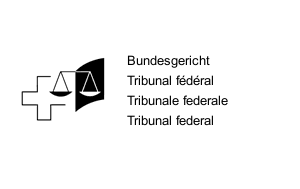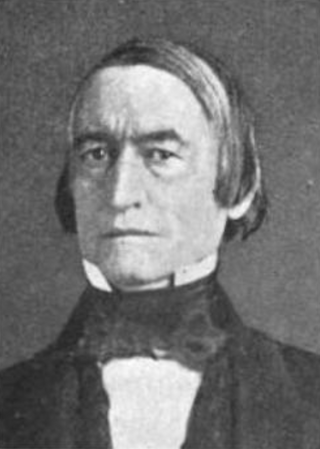Related Research Articles
The Courts of England and Wales, supported administratively by His Majesty's Courts and Tribunals Service, are the civil and criminal courts responsible for the administration of justice in England and Wales.

The Federal Supreme Court of Switzerland is the supreme court of the Swiss Confederation and the head of the Swiss judiciary.
The court system of Canada is made up of many courts differing in levels of legal superiority and separated by jurisdiction. In the courts, the judiciary interpret and apply the law of Canada. Some of the courts are federal in nature, while others are provincial or territorial.
Hamdan v. Rumsfeld, 548 U.S. 557 (2006), is a United States Supreme Court case in which the Court held that military commissions set up by the Bush administration to try detainees at Guantanamo Bay violated both the Uniform Code of Military Justice (UCMJ) and the Geneva Conventions ratified by the U.S.

Sir William Flood Webb was an Australian lawyer. He was the Chief Justice of Queensland and a judge of the High Court of Australia. He was appointed President of the International Military Tribunal for the Far East by General Douglas MacArthur, commonly known as the Tokyo trial, after the end of World War II.

The judicial officers of the Republic of Singapore work in the Supreme Court and the State Courts to hear and determine disputes between litigants in civil cases and, in criminal matters, to determine the liability of accused persons and their sentences if they are convicted.
James Tenney Brand was the 31st Chief Justice of the Oregon Supreme Court, serving in that role from 1951 to 1953. While serving on court from 1941 to 1958 his service was interrupted when he was chosen to be a judge on a military tribunal adjudicating Nazi war crimes after World War II.
Elza Jeffords was a U.S. Representative from Mississippi's 3rd congressional district.

Thomas Ringland Stockdale was a U.S. Representative from Mississippi from 1886 to 1895, and a justice of the Supreme Court of Mississippi from 1896 to 1897.

The Chase Court refers to the Supreme Court of the United States from 1864 to 1873, when Salmon P. Chase served as the sixth Chief Justice of the United States. Chase succeeded Roger Taney as Chief Justice after the latter's death. Appointed by President Abraham Lincoln, Chase served as Chief Justice until his death, at which point Morrison Waite was nominated and confirmed as his successor.

Thirugnana Sampanthar Sinnathuray, known professionally as T. S. Sinnathuray and to his friends as Sam Sinnathuray, was a judge of the High Court of Singapore. Educated at University College London and called to the bar at Lincoln's Inn, he practised for a few years in a law firm before beginning a career with the Singapore Legal Service, serving with the Attorney-General's Chambers as Crown Counsel and deputy public prosecutor (1960–1963), and senior state counsel (1966–1967); with the Subordinate Courts as a magistrate (1956–1959), first district judge (1967–1970), and senior district judge (1971–1978); and with the Supreme Court as deputy registrar and sheriff (1959–1960), and registrar (1963–1966). In 1978 he was elevated to the office of Judge of the High Court of Singapore, and served until his retirement in 1997.

The Supreme Court of Mississippi is the highest court in the state of Mississippi. It was established in 1818 per the terms of the first constitution of the state and was known as the High Court of Errors and Appeals from 1832 to 1869. The court is an appellate court. The court consists of nine justices elected in nonpartisan contests from three districts to serve eight-year terms. The most senior justice serves as the chief justice. It is housed in the Carroll Gartin Justice Building in Jackson, Mississippi, the state capital.

Sarosh Homi Kapadia was the 38th Chief Justice of India. He was the first chief justice born after the partition of India.

Joseph Rockwell Swan was a Republican politician in the U.S. State of Ohio who was a judge on the Ohio Supreme Court 1855–1860.

John Jay Hawkins was an American jurist and politician who served as Associate Justices of the Supreme Court of Arizona Territory and as a member of the Arizona Territorial Legislature.
Ephraim Geoffrey Peyton was an American jurist, lawyer, and politician. He was judge of the High Court of Errors and Appeals of Mississippi from 1868 to 1870 and a justice of its successor, the Mississippi Supreme Court, from 1870 to 1876 including as chief justice.

Cotesworth Pinckney Smith was an associate justice of the Supreme Court of Mississippi from 1832 to 1838, and again in 1840, and was chief justice from 1849 to 1861, returning to Associate Justice status from then until his death in 1862.
Edward Turner was a state legislator and public official who served as Justice of the Supreme Court of Mississippi from 1824 to 1832, and again from 1840 to 1843.
John Taylor was a justice of the Supreme Court of Mississippi, which was then called the High Court of Errors and Appeals, from 1818 to 1820.
The Supreme Tribunal of Lithuania was the highest court in interwar Lithuania. Officially established in December 1918, the court held its first proceedings in August 1919. Initially, it served as an appeals court for cases first decided by the district courts. Its competency was steadily expanded to encompass cases referred from the Army Court in July 1919, cassation cases from the justices of the peace in June 1921, cases from the Klaipėda Region (Memelland) in 1923, and certain functions of an administrative court. The judicial reform in 1933 created a new appeals court leaving the Supreme Tribunal with functions of a court of cassation and an administrative court. Its main task was to interpret and consistently apply the laws. The tribunal handled some controversial high-profile cases, including the case of Prime Minister Augustinas Voldemaras and corruption cases of Prime Minister Vytautas Petrulis and Minister of Foreign Affairs Juozas Purickis. The court was abolished and replaced by the Supreme Court of the Lithuanian SSR in September 1940. The tribunal was briefly resurrected during the German occupation of Lithuania.
References
- 1 2 "Death of Judge Thos. Shackelford", Vicksburg Weekly Commercial Herald (December 28, 1877), p. 1.
- ↑ Leslie Southwick, Mississippi Supreme Court Elections: A Historical Perspective 1916-1996, 18 Miss. C. L. Rev. 115 (1997-1998).
- ↑ "Latest by Telegraph", Natchez Democrat (February 27, 1868), p. 2.
- ↑ Thomas H. Somerville, "A Sketch of the Supreme Court of Mississippi", in Horace W. Fuller, ed., The Green Bag , Vol. XI (1899), p. 511.